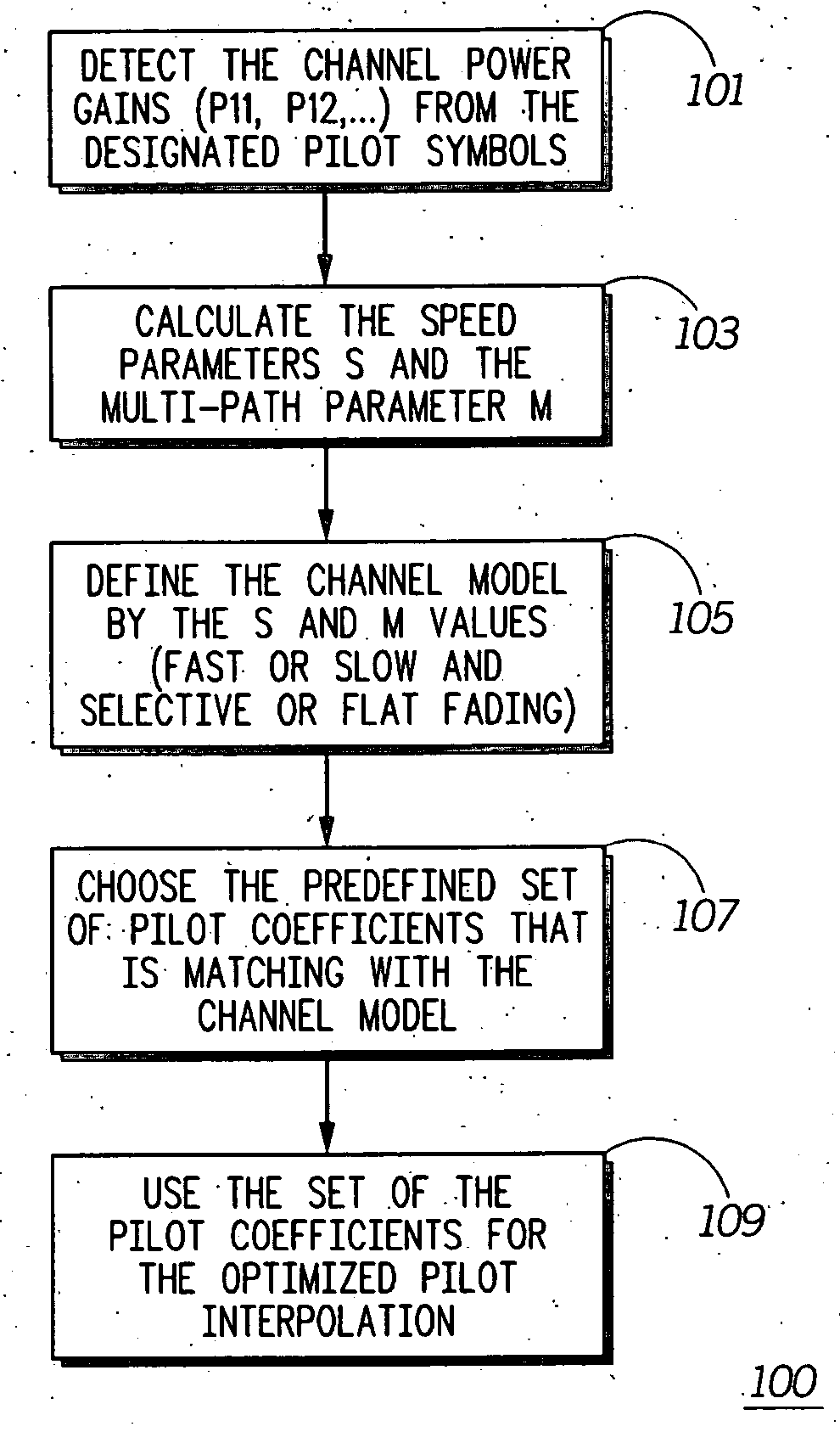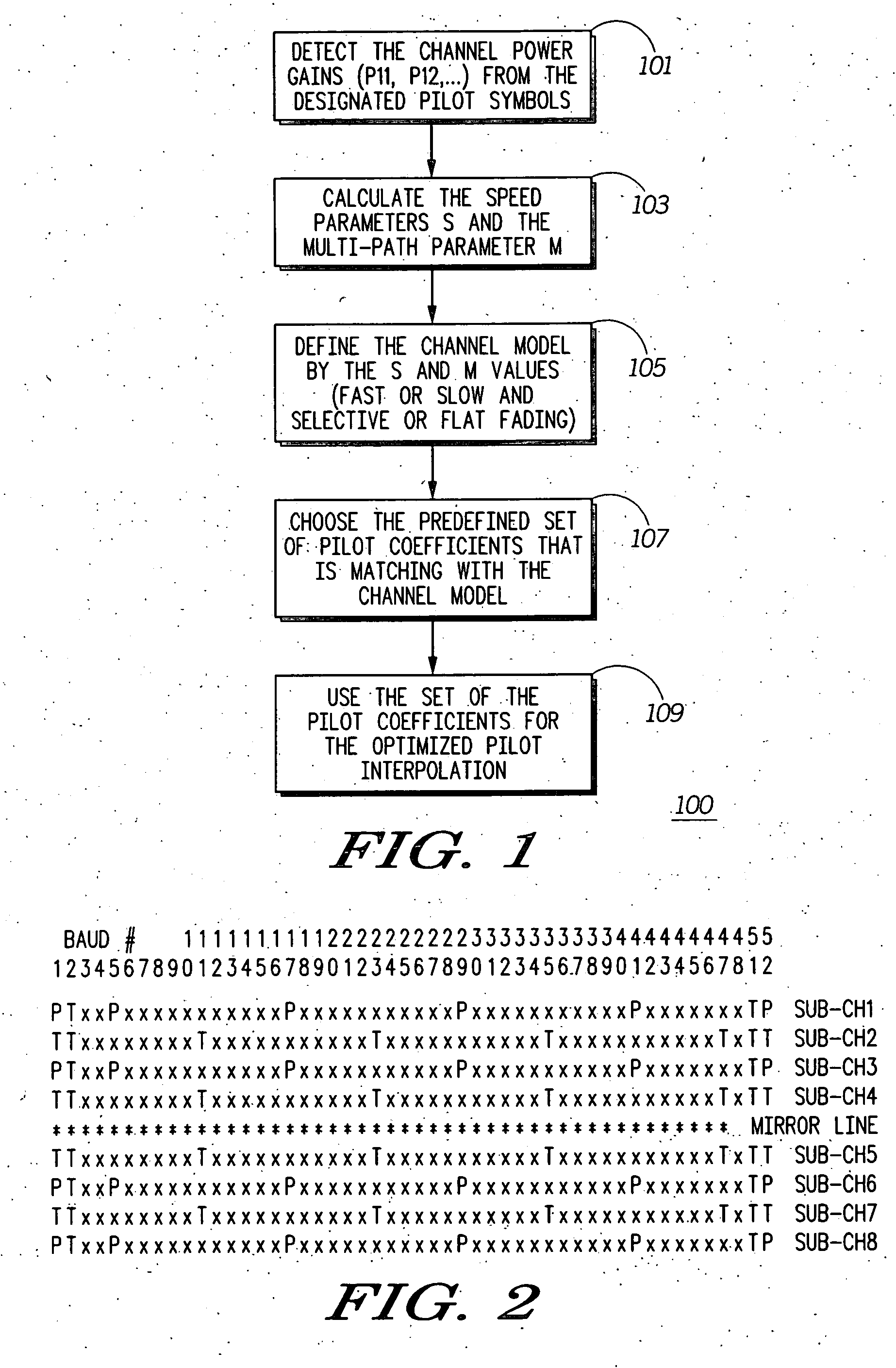Channel condition estimation for pilot coefficient selection
a pilot coefficient and channel condition technology, applied in the field of two-way radio communication, can solve the problems of difficult implementation of gps methods, low cost effectiveness, and one coefficient set that often does not work well, and achieve the effects of improving the block error rate (bler) performance of sam and other multi-carrier modulation systems, high channel gains, and easy estimation of selectivity
- Summary
- Abstract
- Description
- Claims
- Application Information
AI Technical Summary
Benefits of technology
Problems solved by technology
Method used
Image
Examples
Embodiment Construction
[0010] While the specification concludes with claims defining the features of the invention that are regarded as novel, it is believed that the invention will be better understood from a consideration of the following description in conjunction with the drawing figures, in which like reference numerals are carried forward.
[0011] With regard to FIG. 1, a flowchart diagram illustrating the preferred method of the invention 100 includes detecting 101 the channel power gains from the designed pilot symbols then calculating 103 the speed parameter (S) and the multi-path parameter (M) as discussed herein. A channel model is then defined 105 by the speed parameter and multi-path parameter values and a predefined set of pilot coefficients is chosen 107 that is matched with the channel model. That set of pilot coefficients is then used 109 for the optimized pilot interpolation in order to provide the best data reception based on the optimally estimated channel characteristics.
[0012]FIG. 2 ...
PUM
 Login to View More
Login to View More Abstract
Description
Claims
Application Information
 Login to View More
Login to View More - R&D
- Intellectual Property
- Life Sciences
- Materials
- Tech Scout
- Unparalleled Data Quality
- Higher Quality Content
- 60% Fewer Hallucinations
Browse by: Latest US Patents, China's latest patents, Technical Efficacy Thesaurus, Application Domain, Technology Topic, Popular Technical Reports.
© 2025 PatSnap. All rights reserved.Legal|Privacy policy|Modern Slavery Act Transparency Statement|Sitemap|About US| Contact US: help@patsnap.com



